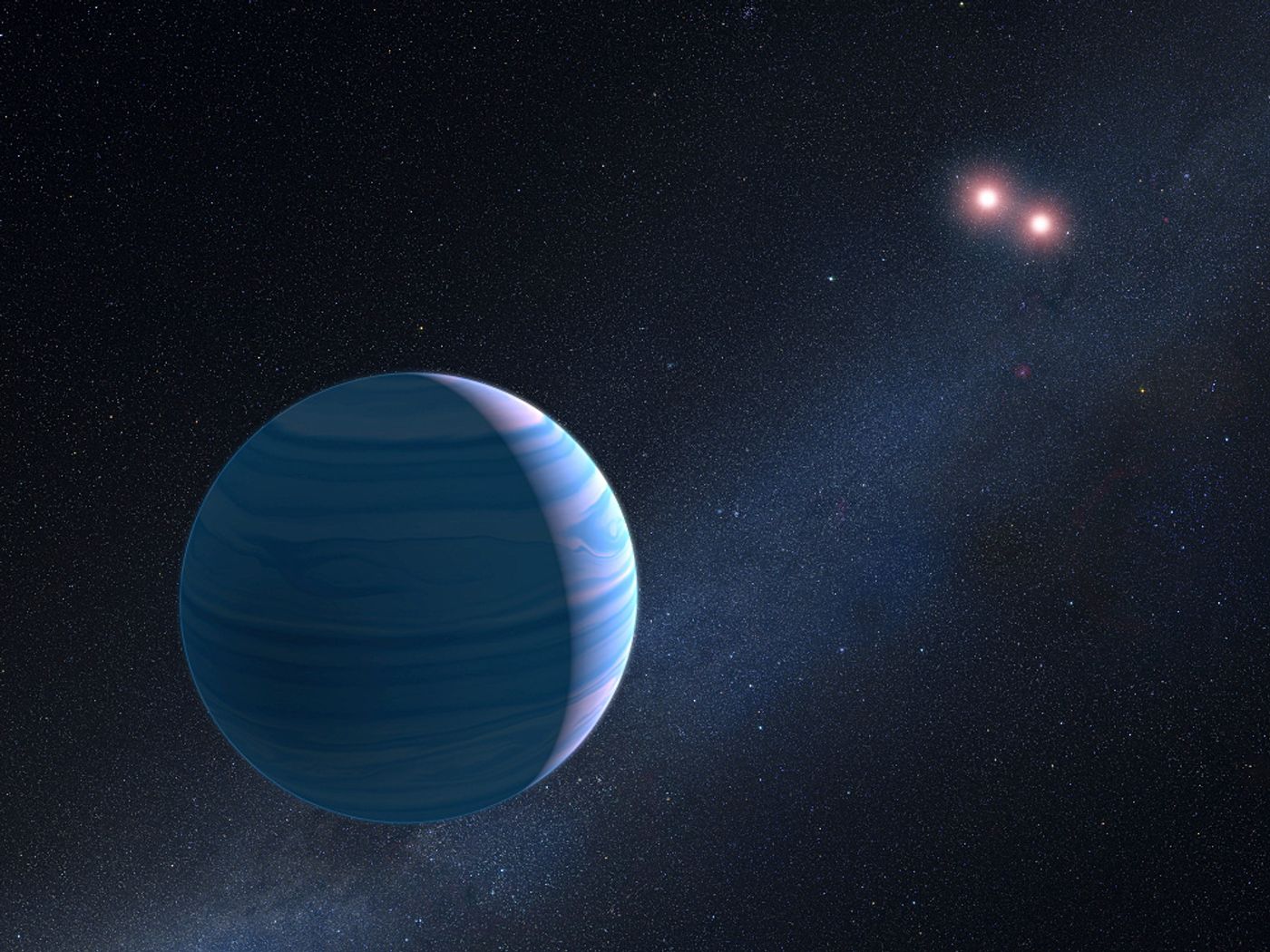This Exoplanet Discovery Was Made Possible by its Microlensing Effect
Using the tried and true Hubble Space Telescope, astronomers have reportedly found another exoplanet orbiting two stars at a distance of about 300 million miles away that are part of a binary system about 8,000 light years away known as OGLE-2007-BLG-349.
It’s so named because the system was found in 2007, but the discovery of the exoplanet came under very interesting circumstances.
Image Credit: NASA/ESA
The exoplanet was originally discovered with the Optical Gravitational Lensing Experiment (OGLE) initiative, which is responsible for having detecting more than 17,000 microlensing events since its inception, but the data was later confirmed when it was cross-referenced with information from Hubble.
As it turns out, the exoplanet was only found because the microlensing effect that its massive gravitational field was having on all of the light surrounding it. In other words, it was bending space-time and was observable from a distance.
Such activity would suggest the planet has a large mass to it; similar to that of Saturn from our Solar System. The findings are available in a paper online and have been accepted for publication in The Astronomical Journal.
Scientists are pointing out that this is the first time a circumbinary exoplanet discovery has ever exhibited microlensing effects, and more importantly, it will have astronomers re-thinking the way they look for exoplanets orbiting their host stars.
Why? Because by looking for these special characteristics, we may now be able to search for exoplanets that orbit much further from their host stars than ever before.
By looking for microlensing effects, we don’t need to wait for a planet to transit over the surface of a star and look for ‘flickering’ effects because microlensing effects mean something exists in a particular spot and is distorting light.
The new theory breathes new life into the Hubble Space Telescope, as it could now prove to be quite a useful tool in exoplanet discovery. It’s soon set to be replaced by the James Webb Space Telescope, but perhaps astronomers can still make good use of Hubble in their constant search for alien exoplanets in the meantime.
Source: Hubble Space Telescope via Seeker









